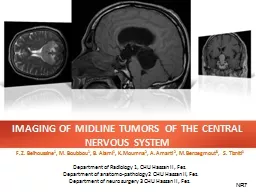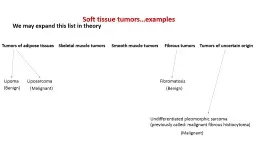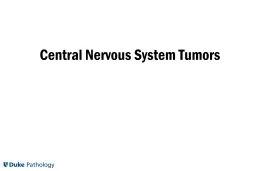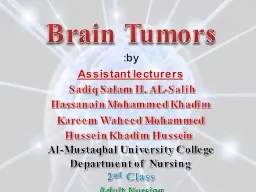PPT-Brain Tumors: Physical Symptoms and Side Effects
Author : trish-goza | Published Date : 2018-12-08
Presented by NAME Overview of physical symptoms Causes From the tumor itself symptoms based on tumor sizelocation From treatment Fatigue dizziness headaches Permanent
Presentation Embed Code
Download Presentation
Download Presentation The PPT/PDF document "Brain Tumors: Physical Symptoms and Side..." is the property of its rightful owner. Permission is granted to download and print the materials on this website for personal, non-commercial use only, and to display it on your personal computer provided you do not modify the materials and that you retain all copyright notices contained in the materials. By downloading content from our website, you accept the terms of this agreement.
Brain Tumors: Physical Symptoms and Side Effects: Transcript
Download Rules Of Document
"Brain Tumors: Physical Symptoms and Side Effects"The content belongs to its owner. You may download and print it for personal use, without modification, and keep all copyright notices. By downloading, you agree to these terms.
Related Documents

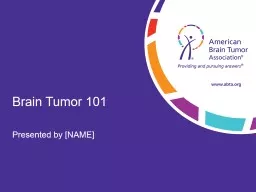
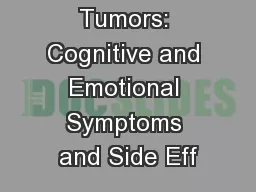

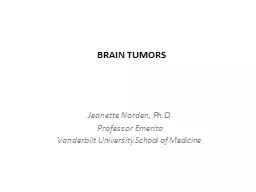
![Brain Tumor 101 Presented by [NAME]](https://thumbs.docslides.com/775177/brain-tumor-101-presented-by-name.jpg)

